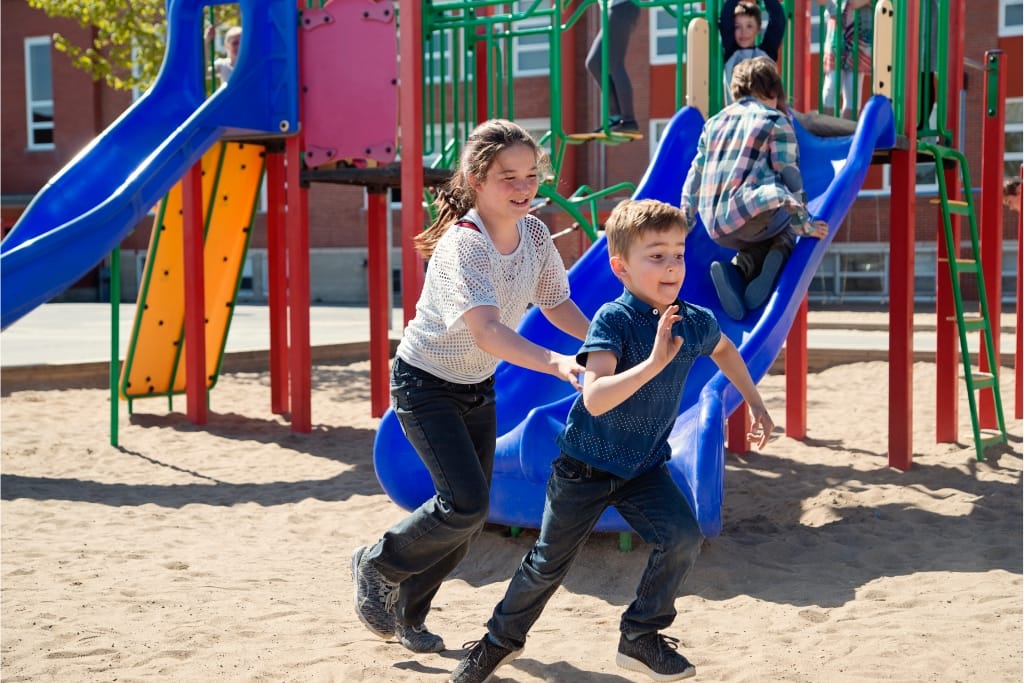In an era where ensuring the safety of students and staff is of paramount importance, equipping educational institutions with effective strategies for handling active shooter situations is crucial.
Implementing informed and proactive measures can significantly enhance the level of preparedness within schools, potentially saving countless lives.
As educators and administrators, understanding and applying key tips can make a profound difference.
Read on to discover ten essential active shooter tips every school should consider to fortify safety protocols and foster a secure learning environment.
1)) Establish A Comprehensive Emergency Plan
Creating a comprehensive emergency plan is the foundation of school preparedness against active shooter situations.
This plan should involve a detailed process for immediate response, staff members' roles, and responsibilities, and clear communication channels for alerting authorities and parents.
Conducting regular drills and training sessions with students and staff can enhance the effectiveness of the plan by ensuring everyone knows their role during an actual emergency.
It is vital to collaborate with local law enforcement to tailor the plan to the school's specific needs and environment.
A well-crafted emergency plan not only instills confidence in the school community but also lays the groundwork for a rapid and cohesive response to potential threats.
Implementing this essential strategy is the first step in creating a safer school atmosphere.
Active shooter posters play a crucial role in promoting awareness and preparedness among students and staff within schools.
By prominently displaying these informative materials in classrooms and common areas, schools create an environment that continuously reinforces safety protocols.
These posters serve as constant reminders of the steps to take during an emergency, ensuring that the information is readily accessible and ingrained in everyone's mind.
Moreover, they can help reduce panic by providing clear, concise instructions that can guide actions during high-stress situations.
Additionally, active shooter posters can stimulate discussions about safety procedures, encouraging open communication and ongoing education.
By integrating such visual aids into the school environment, educational institutions can enhance their overall security culture and empower their communities to respond more effectively to potential threats.
2)) Conduct Regular Active Shooter Drills
Conducting regular active shooter drills is a critical component of school safety plans.
These drills prepare students, teachers, and staff members to act calmly and deliberately during a real-life threat, thereby reducing panic and confusion.
By simulating different scenarios, schools can identify potential weaknesses in their response strategies and make necessary adjustments.
It is essential to ensure that drills are age-appropriate to avoid unnecessary anxiety among younger children, while still equipping them with the knowledge of needed actions.
Involving local law enforcement in these exercises can further enhance their effectiveness by providing valuable insights and feedback from professionals experienced in handling emergencies.
Regular active shooter drills foster a culture of preparedness and awareness, helping the school community stay resilient and responsive in the case of an emergency.
3)) Train Staff And Students In Safe Practices
Training staff and students in safe practices is crucial to enhancing a school’s overall preparedness for active shooter scenarios.
Educators should receive specialized training on recognizing warning signs and implementing de-escalation techniques to prevent potential threats.
Similarly, students must be educated on the importance of adhering to safety protocols and immediately reporting suspicious activity.
Workshops and seminars can be effective methods for delivering this training, providing participants with a platform to ask questions and engage in discussions about safety concerns.
Integrating these practices into the school's curriculum ensures that the knowledge is continuously reinforced.
All members of the school community benefit from knowing how to respond swiftly and effectively during a crisis.
Prioritizing this element of safety protocol ensures that everyone is equipped with the tools and confidence to contribute to a secure educational environment.
4)) Implement A Notification System
Implementing a notification system is a vital strategy for ensuring swift communication during an active shooter situation.
Such systems should provide immediate alerts to students, staff, and parents through multiple channels, including text messages, emails, and public address systems.
The goal is to disseminate critical information quickly and efficiently, minimizing confusion and facilitating faster evacuation or lockdown procedures.
It is crucial to ensure that the notification system is reliable, easy to use, and regularly tested to guarantee functionality in an emergency.
Training staff and students on how to respond upon receiving notifications further strengthens the system's efficacy.
An effective notification system not only streamlines communication but also plays a significant role in saving lives by enabling immediate action when every second counts.
5)) Secure Access Points And Monitor Entryways
Securing access points and monitoring entryways are fundamental components of safeguarding any school environment against unauthorized intrusion.
By installing high-quality locks, and video surveillance systems, and employing controlled entry measures, schools can significantly reduce the risk of potential threats gaining access to the building.
It is essential to maintain a visitor management system, which mandates all guests to check in at a central point, ensuring that only those with a legitimate reason are allowed entry.
Employing security personnel to patrol these areas can provide an additional layer of protection and act as a visible deterrent to would-be intruders.
Regular inspections and upgrades of security measures keep the system robust and adaptable to emerging challenges.
By prioritizing these strategies, schools foster a secure perimeter that enhances the overall safety of the institution.
6)) Create Safe Zones And Evacuation Routes
Establishing designated safe zones and marked evacuation routes are critical steps in enhancing the safety of a school environment.
Safe zones should be identified and designed within each classroom and common area, ensuring they provide secure shelter during an active shooter event.
These areas must be readily accessible and equipped with necessary supplies such as first aid kits and emergency communication tools.
Clearly defined evacuation routes, along with regular practice drills, enable students and staff to quickly and calmly exit the premises when required.
Signage and instructions should be prominently displayed throughout the school to guide individuals to safety.
Collaborating with local emergency services to develop and review these plans enhances their effectiveness and adaptability.
By focusing on detailed planning and preparation, schools reinforce a proactive approach to ensure the safety and security of their community in times of crisis.
7)) Foster A Culture Of Vigilance
Cultivating a culture of vigilance within a school setting is essential for maintaining heightened awareness and proactive safety measures.
Encouraging members of the school community to remain observant and report any unusual or suspicious behavior can drastically reduce the likelihood of potential threats.
This culture of vigilance involves regular education and discussion about the importance of staying alert, alongside initiatives that promote collaboration and communication among students, staff, and parents.
By creating an environment where everyone feels responsible for each other's safety, schools empower individuals to speak up without fear of repercussions.
Regularly revisiting safety policies and holding drills reinforces this vigilant mindset and ensures preparedness.
Establishing a vigilant atmosphere contributes significantly to the overarching security framework, creating a safer and more cohesive community.
8)) Communicate With Law Enforcement
Establishing clear and open lines of communication with law enforcement is a critical element of school safety strategies.
By fostering a strong partnership with local police and emergency services, schools can ensure a prompt and coordinated response in the event of an active shooter incident or any other security threat.
Regular meetings, joint training exercises, and information sharing between schools and law enforcement agencies facilitate a better understanding of each other's protocols and capabilities.
This collaboration can lead to the development of comprehensive safety plans that are more effective and tailored to the needs of the specific school environment.
Having a designated liaison between the school and law enforcement helps to streamline communication during emergencies and ensures that critical information is transmitted quickly and accurately.
Through concerted efforts with law enforcement, schools enhance their ability to prevent, respond to, and recover from security threats, creating a safer learning environment for all.
9)) Develop A Reunification Plan
Developing a robust reunification plan is a crucial component of a school's emergency preparedness strategy, ensuring the safe and orderly reunification of students with their families following a crisis.
The plan should clearly define procedures, designate safe and easily accessible locations for reunification, and outline the roles and responsibilities of school staff and emergency responders.
It’s imperative to integrate this plan with existing safety protocols and conduct regular drills to familiarize everyone with the procedures.
Effective reunification planning also involves clear communication channels to inform parents and guardians promptly and accurately about where and how they will be reunited with their children.
By preparing in advance and maintaining a well-organized approach, schools can minimize chaos and confusion in the aftermath of an emergency, reassuring families and restoring normalcy more swiftly.
10)) Offer Support Services Post-Incident
Providing comprehensive support services post-incident is vital for aiding the recovery and well-being of students and staff affected by a traumatic event at school.
Support should encompass emotional, psychological, and practical assistance, tailored to meet the diverse needs of the school community.
Immediate access to counseling and mental health resources is essential to help individuals process their experiences and begin healing.
Organizing support groups or workshops can facilitate a shared understanding and collective resilience among those involved.
School administrators should collaborate with mental health professionals to develop long-term support plans, ensuring ongoing care and monitoring for those in need.
By prioritizing post-incident support, schools demonstrate their commitment to recovery and foster a nurturing environment where healing and resilience can flourish over time.
Conclusion
Incorporating comprehensive safety measures in schools is of paramount importance in ensuring the well-being and security of students, staff, and the surrounding community.
By fostering a culture of vigilance, engaging in active communication with law enforcement, and implementing thorough emergency preparedness plans, schools create a fortified environment that can withstand potential threats.
The integration of clear reunification strategies and post-incident support services further enhances the ability of schools to respond effectively to crises, promoting recovery and resilience.
As these efforts demonstrate a deep commitment to supportive and secure learning spaces, they serve to reassure parents and students alike that their safety is a top priority.
Embracing these comprehensive strategies not only safeguards the present but also invests in a safer, more resilient future for all members of the school community.
Download Our Free E-book!







